Your Shopify web site pace instantly impacts how guests work together along with your on-line retailer. And might affect how seemingly they’re to grow to be prospects.
On this article, you’ll study six simple ideas to enhance your web site pace and which instruments you need to use to measure it.
However first, let’s have a look at how gradual web site pace impacts your enterprise.
How Does Sluggish Web site Velocity Have an effect on Your Shopify Web site?
A gradual Shopify web site is dangerous for 2 foremost causes.
Let’s go over each:
Sluggish Web site Velocity Impedes the Consumer Expertise (UX)
Sluggish web site pace impedes the procuring journey.
If a webpage at any level within the shopping for course of takes too lengthy to load, potential patrons can get impatient and depart your web site earlier than making a purchase order.
This results in decrease conversion charges, that means fewer individuals full the actions you need them to in your web site. Like making purchases or subscribing to your publication.
And slower web sites are inclined to have larger bounce rates.
This implies buyers are leaving your web site with out partaking. So, they’re additionally not shopping for.
Some bounces are inevitable. However numerous guests leaving with out engagement hurts your profitability in the long term.
Sluggish Web site Velocity Has a Unfavourable Affect on search engine optimization
Page speed is one in every of Google’s confirmed rating elements. So, having a gradual web site might result in decrease rankings on search engine results pages (SERPs).
Whereas there are various different elements—like relevance and content material high quality—that go into figuring out a web site’s rankings, web site pace performs an plain function.
And when your visibility is diminished like this, potential prospects will battle to find your store. Resulting in fewer web site guests and prospects.
Newbie-Pleasant Suggestions for Shopify Web site Velocity Optimization
These six easy steps might help you improve your Shopify web site’s pace:
1. Disable Unused Apps and Options
If you obtain apps and options to your store, they incorporate some code and script to your web site to allow them to run.
However if you happen to’re not utilizing these, the code is simply working within the background for no cause. Making your web site’s efficiency slower.
Shopify recommends utilizing a maximum of around 20 apps. You probably have greater than that, undergo your retailer to verify for any unused apps you’ll be able to take away.
There may be some you simply tried out and forgot to delete.
You may take away pointless apps in your Shopify Admin. Click on “Apps” adopted by “Apps and gross sales channel settings.”
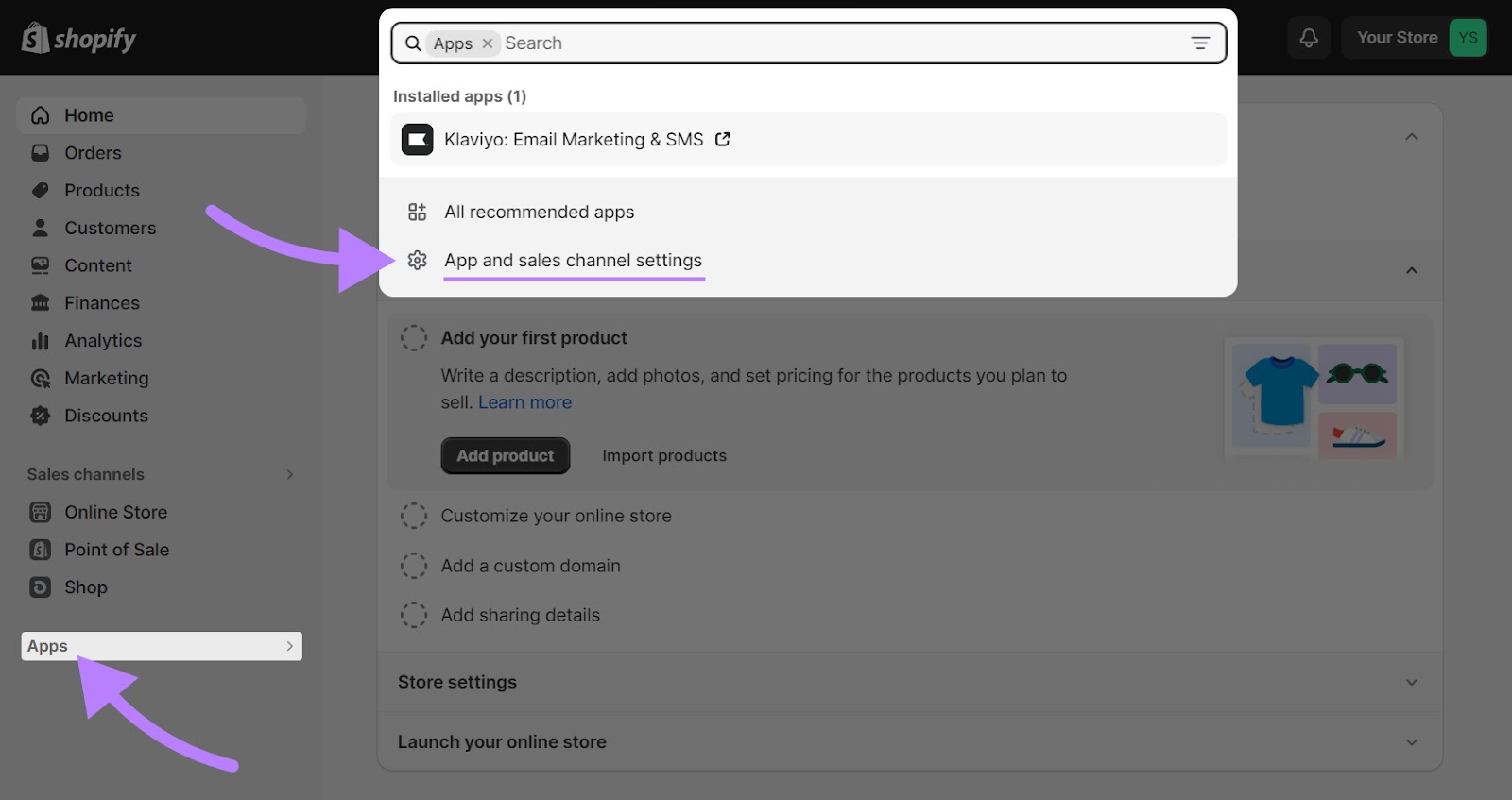
Right here, you’ll see all of the apps you’ve put in. Simply hover above those you’re not utilizing and click on “Uninstall.”
Your web site may additionally have some options you don’t actually need.
For instance, a countdown timer can add a way of urgency to your store. However if you happen to’re not working time-sensitive promotions or occasions, it is simply additional code that slows down your web site.
To resolve which apps or options to maintain, ask your self which is able to assist your prospects essentially the most as they go from touchdown in your web site to creating a purchase order.
2. Reduce Redirects
Redirects instruct browsers to go to a distinct URL than the one initially requested.
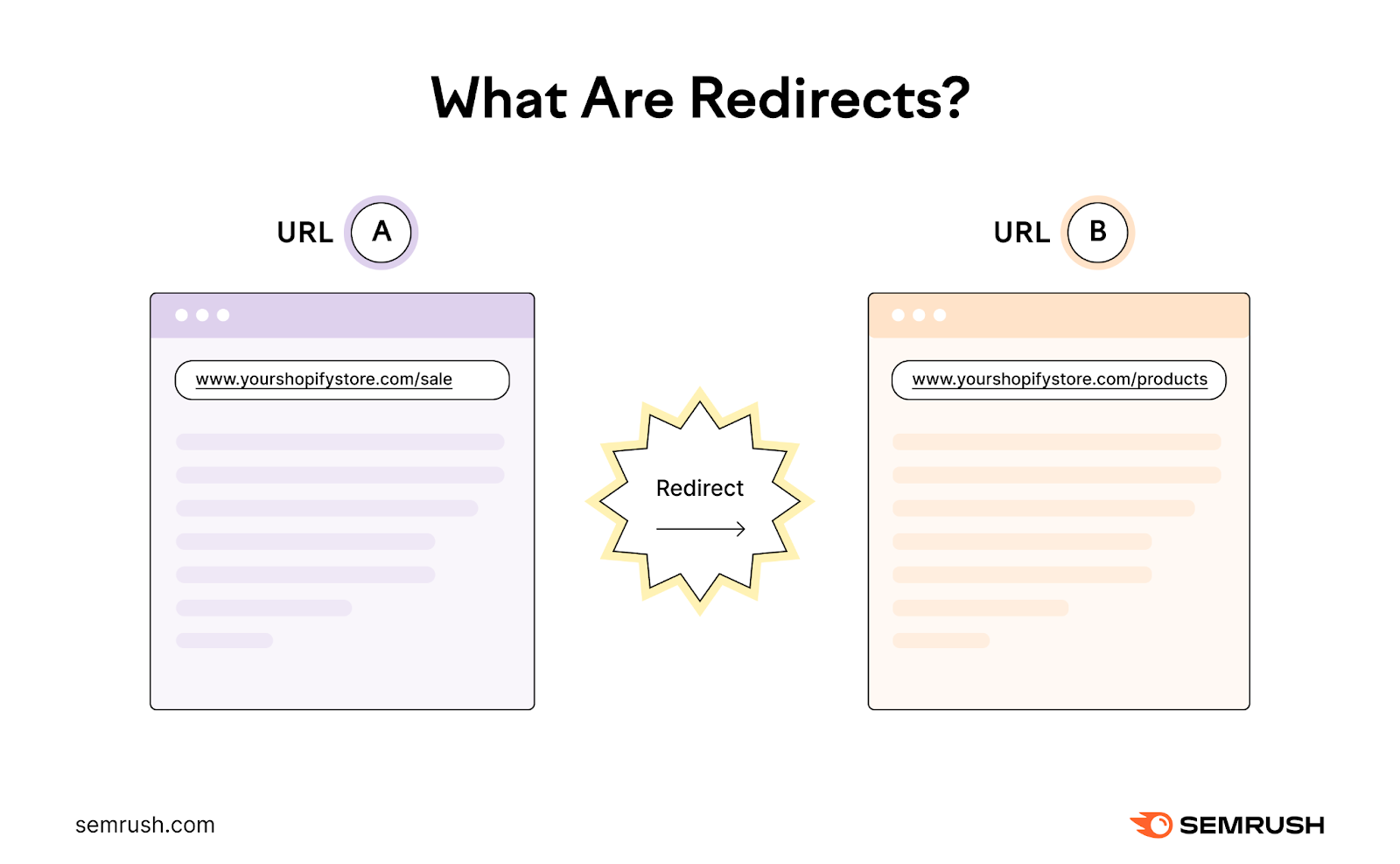
Let’s say you’ve gotten a product web page for a particular sale at “www.yourshopifystore.com/sale” through the vacation season.
However after the sale, you take away that web page and wish guests to go to your basic product web page at “www.yourshopifystore.com/merchandise” as a substitute.
You may arrange a redirect in order that when prospects kind “www.yourshopifystore.com/sale,” they’re mechanically despatched to “www.yourshopifystore.com/merchandise.”
When used successfully, redirects enhance the general consumer expertise by ensuring they don’t land on damaged pages.
However when carried out incorrectly, it could injury the consumer expertise, decelerate your web site, and confuse search engine crawlers.
Listed here are a number of frequent points:
- Redirect chain: This occurs if a redirect results in one other redirect. Redirect chains that may delay crawling, which slows down your load time and frustrates customers.
- Redirect loops: This occurs when two or extra URLs all redirect to one another. So, URL A would redirect to URL B, and URL B would go to URL A. This redirection gained’t really take your guests wherever.
You should utilize Semrush’s Site Audit software to verify for—and decrease—redirect chains and loops.
To get began, open the software, enter your URL within the search bar, and click on “Begin Audit.”

Then, you’ll be requested to configure your Site Audit. Right here, you’ll be able to set a restrict for the variety of pages the software can verify and even set computerized weekly or every day audit schedules.
When you’re carried out, click on “Begin Web site Audit.”
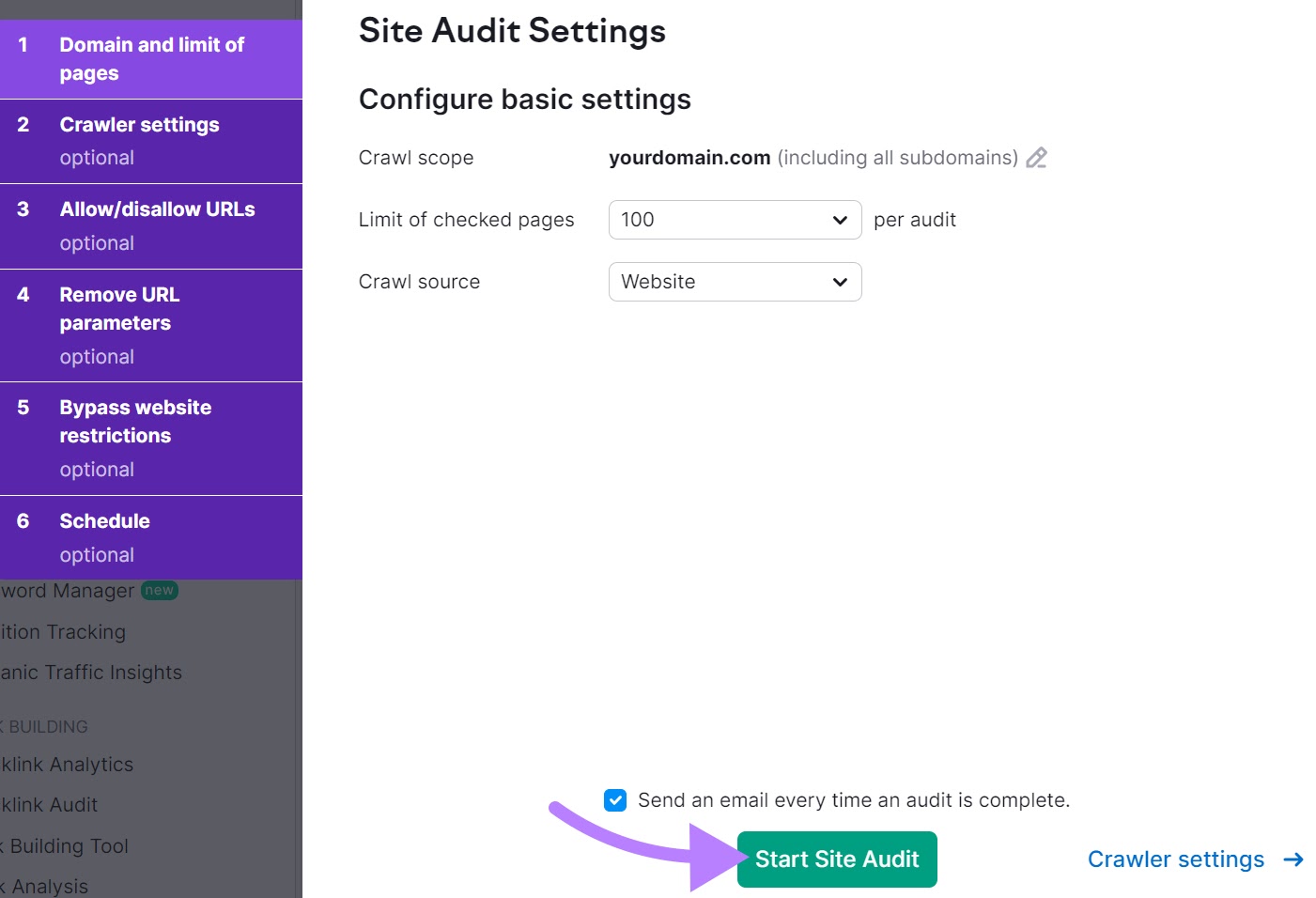
After your audit is prepared, you’ll see a dashboard much like this one:
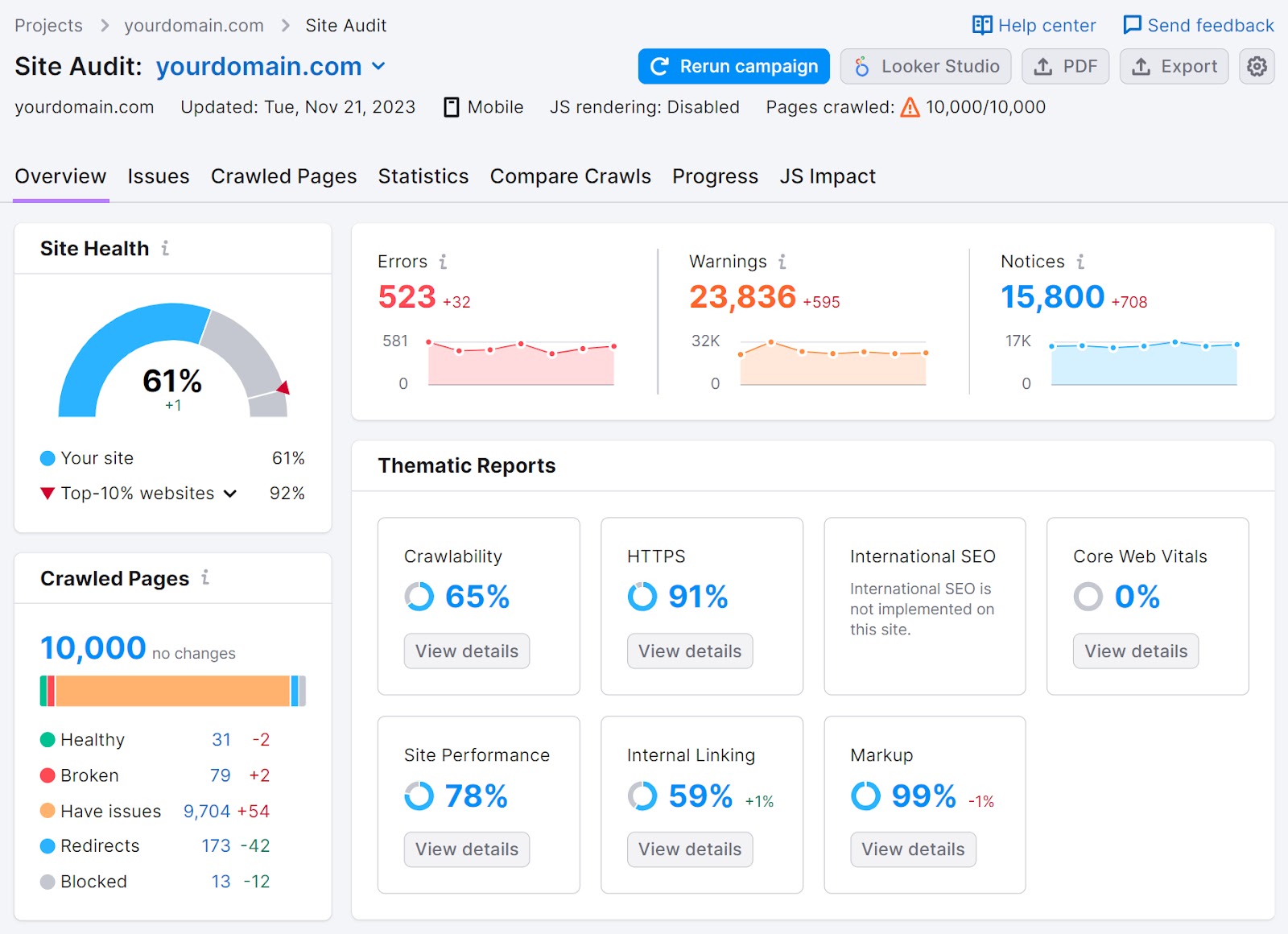
Head over to the “Points” tab and enter “redirect chains” within the search bar.
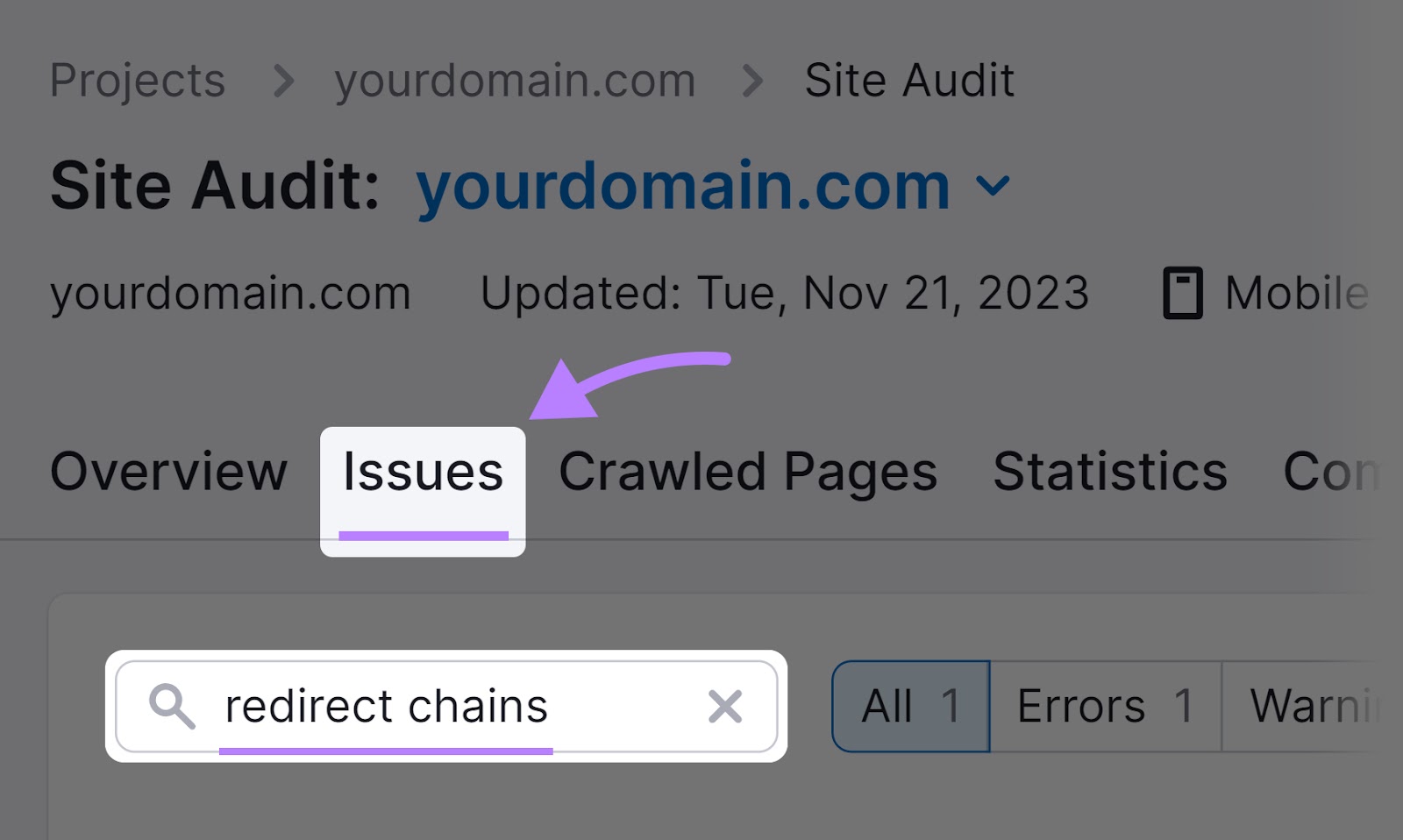
Then, click on on “# redirect chains and loops” for a full report of the affected pages.
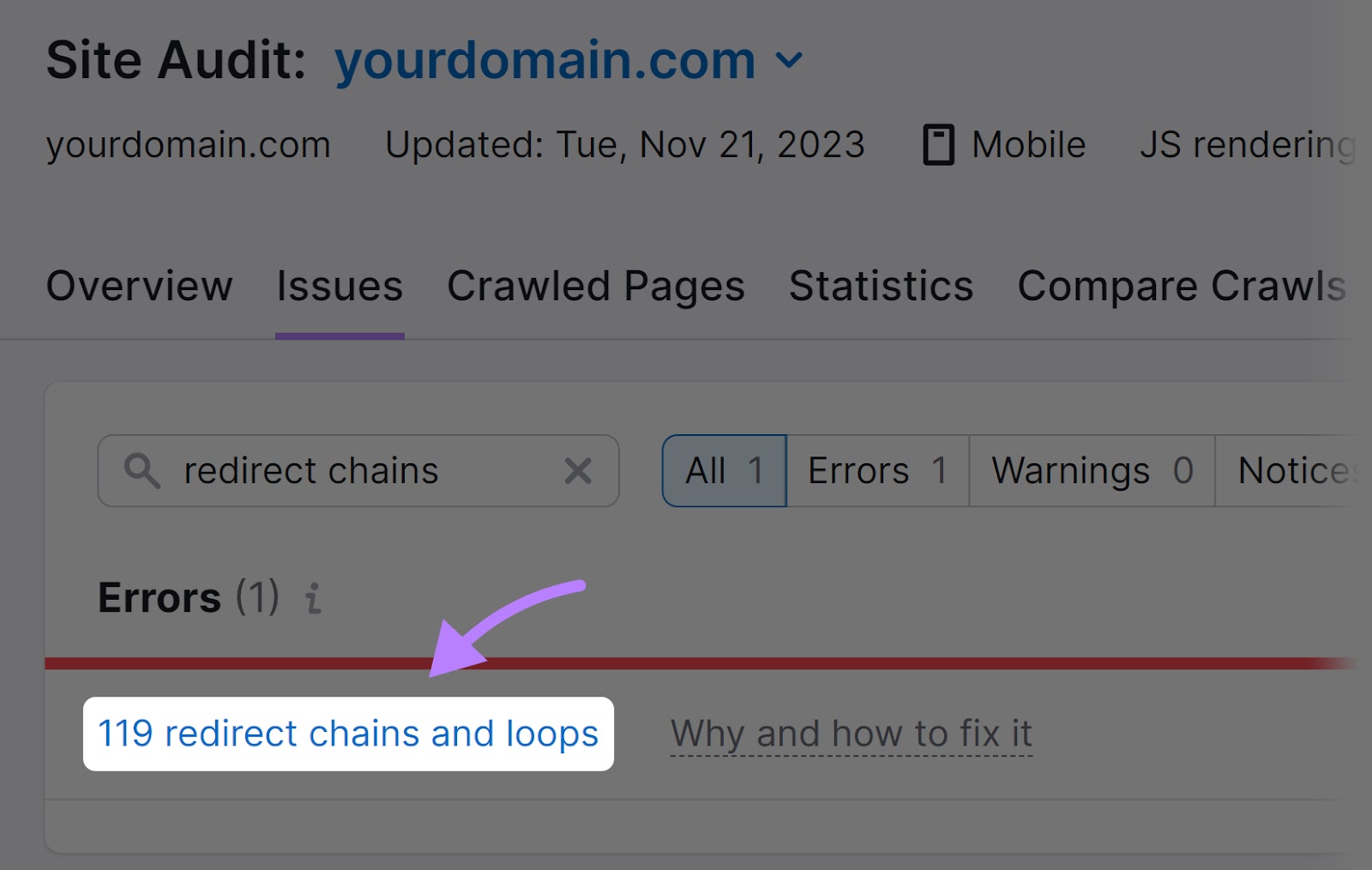
When you’ve recognized any chains or loops, you can also make changes.
3. Optimize Your Photographs
Excessive-quality photos usually include giant file sizes. This could be a downside when you think about that these recordsdata must be downloaded from the server to the consumer’s system when the webpage hundreds.
Why?
As a result of bigger recordsdata take longer to obtain, particularly on slower web connections. And that slows the general web site pace.
And every picture usually requires a separate hypertext switch protocol (HTTP) request to the server. So extra photos imply extra requests that add to the server’s load and the general information switch time. (Extra on this quickly.)
Listed here are some image optimization tips that may assist:
- Compress photos: You should utilize instruments like Optimizilla or TinyPNG to scale back the file dimension of your photos with out shedding a lot high quality.
- Make GIFs static: You probably have any GIFs, think about changing them with static photos. Animated GIFs are normally bigger recordsdata and may decelerate your pages.
- Consumer fewer photos: Solely use photos that assist your prospects perceive your merchandise and make purchases. Keep away from too many ornamental photos that don’t present worth.
- Lazy-load photos: Which means that photos are loaded solely when customers want them. You may implement this by including a loading=”lazy” attribute to your picture HTML tags.
4. Optimize Your Theme’s Efficiency
Whereas a Shopify theme can begin out as light-weight and quick, making extreme modifications to its core design can lead to a bloated, gradual web site.
Listed here are some tricks to preserve and optimize your theme’s efficiency:
- Reduce theme customizations: Too many pointless customizations—particularly people who require further scripts or heavy assets like advanced animations—can decelerate your theme. Attempt to use the theme’s built-in options and maintain customized modifications to a minimal.
- Streamline your homepage: A cluttered homepage takes longer to load and might be more durable to navigate. Take into account showcasing solely the important parts (like merchandise) which are essential to your enterprise.
- Recurrently replace your theme: Maintain your theme up to date to the newest model. Updates usually embrace optimizations.
5. Verify Your Fonts
Fonts can typically be categorised into two classes: system fonts and internet fonts.
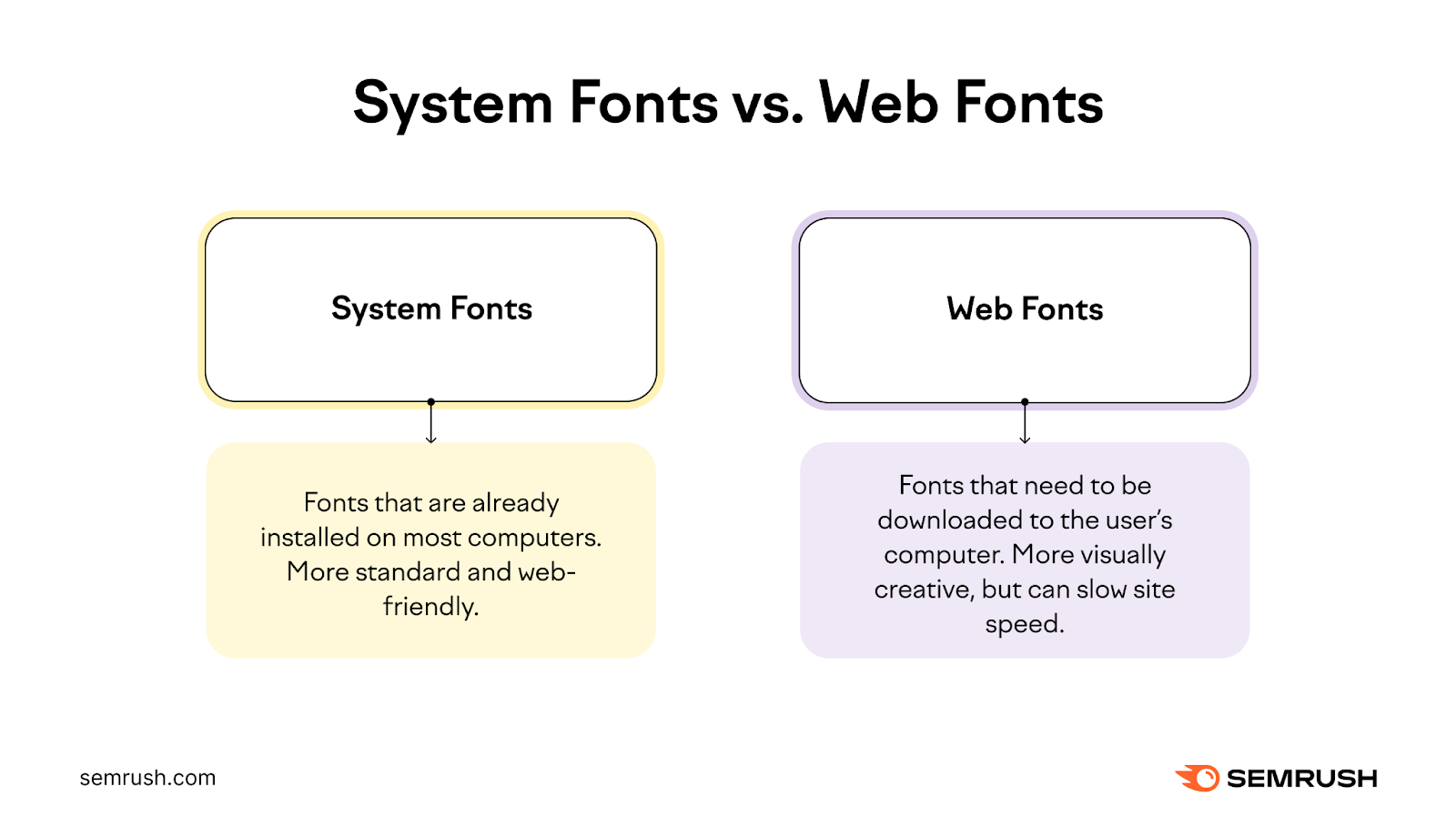
System fonts are already put in in your pc or system. They’re designed to be suitable with completely different working methods and functions.
Net fonts are hosted on a server and downloaded by the consumer’s browser after they go to a webpage. They are often extra distinctive and are sometimes used when a model goes for a selected look.
However internet fonts may also decelerate your web site by:
- Including additional requests: If you use a customized font in your web site, it’s essential to load it from a supply—both from your individual server or a third-party service like Google Fonts. This provides additional requests, which may decelerate the loading time. (Extra on this quickly.)
- Blocking rendering: Browsers want to attend for the net font to be downloaded earlier than they’ll show the textual content. This may trigger a delay in rendering, which negatively impacts the consumer expertise.
To keep away from slowing down your buyers’ expertise, you need to use system fonts. Some examples embrace:
- Georgia
- Monaco
- Menlo
- Instances New Roman
6. Cut back the Variety of HTTP Requests
HTTP requests are messages an online browser sends an online server each time somebody desires to view your web site.
These requests might be for photos, JavaScript recordsdata, and so forth.
The extra recordsdata on the web site, the extra HTTP requests the browser must make to load all of them. And the slower the web site turns into.
To scale back the variety of HTTP requests, begin by eradicating pointless buttons.
For instance, if in case you have too many calls to motion (like “Purchase Now,” “Study Extra,” or “Subscribe”) on one web page, delete those that aren’t a precedence.
And follow easy designs in your Shopify web site. As a result of advanced animations or design parts demand further code and assets.
When you’ve carried out modifications to hurry up your web site, monitor your web site pace frequently to verify every part is working easily.
Listed here are three instruments that can assist you do exactly that.
Semrush Web site Audit
If you wish to take your web site well being evaluation to the subsequent degree, conduct a full technical audit with Semrush’s Site Audit software.
To get began, open the software. When you configure your settings, click on “Begin Web site Audit.”

To view details about your Shopify web site’s pace, click on “View particulars” underneath the “Web site Efficiency” part.
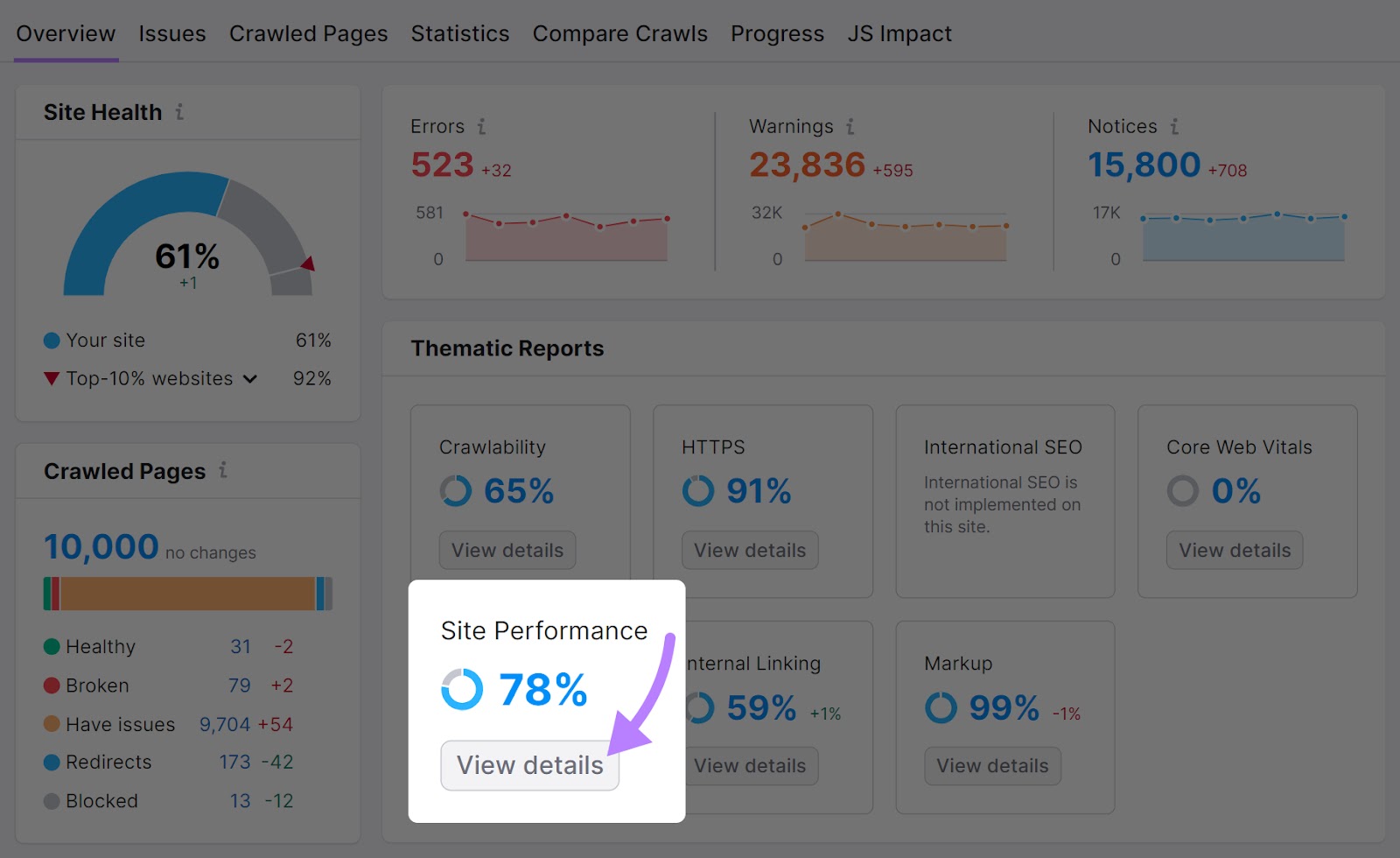
Subsequent to every concern, you’ll see “Study extra” or “Why and repair it.”
When you click on on that button, you’ll see a pop-up providing you with extra info on the precise concern and what steps it’s essential to take to treatment it.
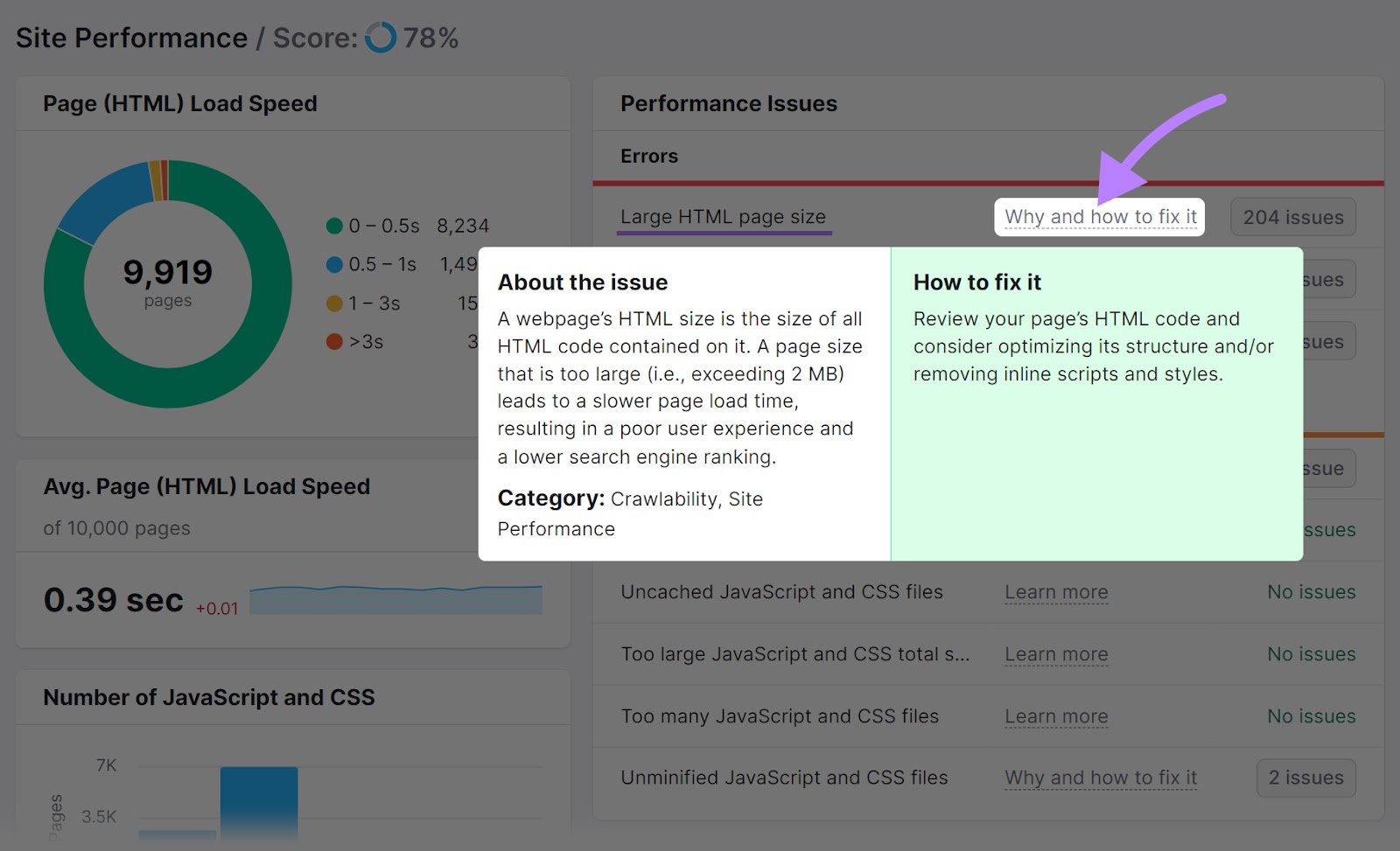
When fixing these points, prioritize “Errors.” You may transfer on to “Warnings” and “Notices” afterward.
One other helpful set of metrics is the “Core Net Vitals” part.
The Core Net Vitals are metrics that consider your web site’s loading efficiency, interactivity, and visible stability. And there are three:
- Largest Contentful Paint (LCP): How lengthy it takes in your foremost content material to load
- First Enter Delay (FID): The time between the consumer interacting with the web page and the web page responding to their interplay. Google is about to replace this metric with Interplay to Subsequent Paint (INP) in March 2024.
- Cumulative Structure Shift (CLS): How a lot the format shifts unexpectedly when customers are viewing your web page
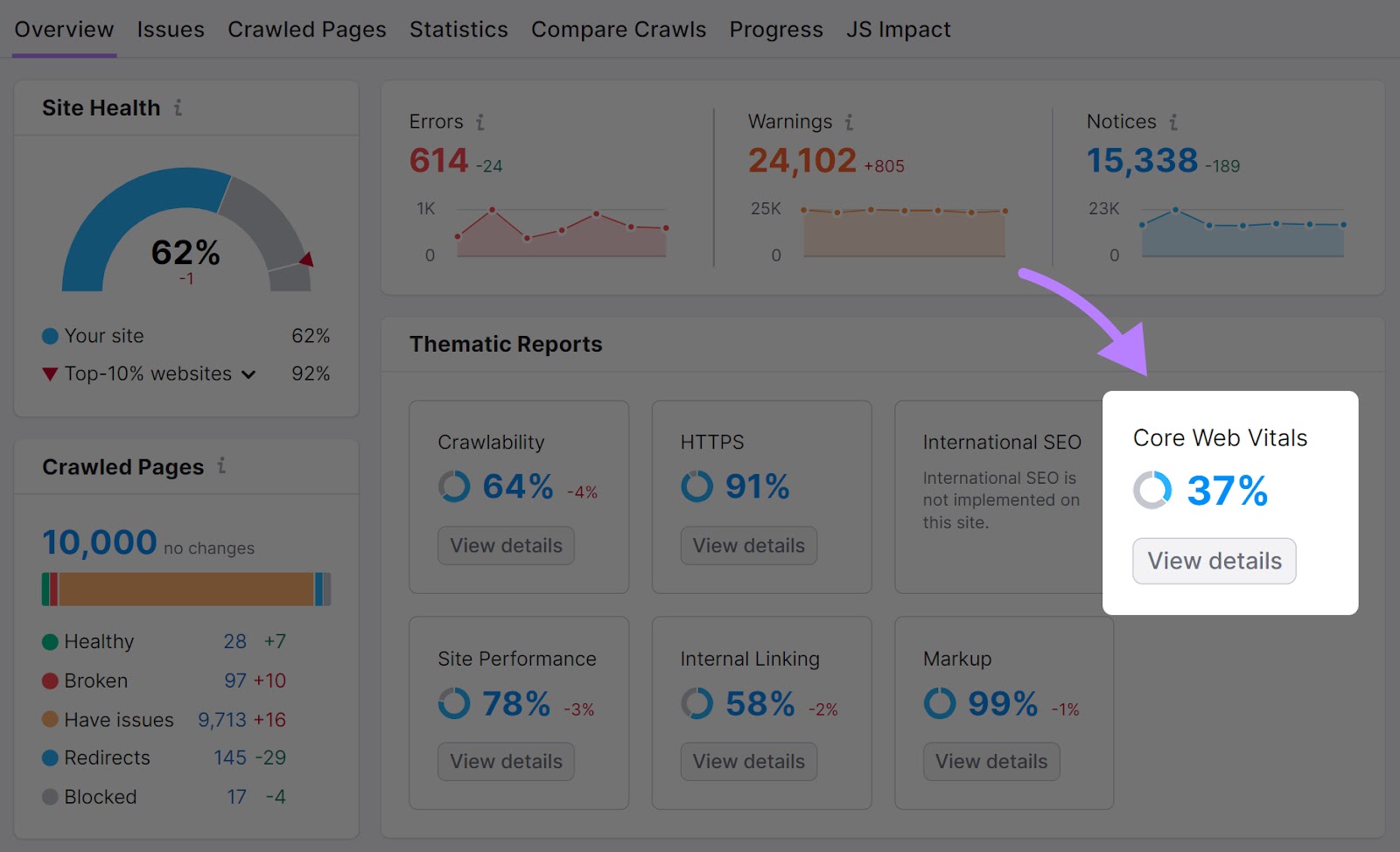
You’ll then get a breakdown of how your pages carry out for these metrics. And a few optimization ideas.
Shopify On-line Retailer Velocity Report
Shopify’s On-line Retailer Velocity Report makes use of Google Lighthouse (open-source software program from Google that’s designed that can assist you enhance your web site) to calculate and examine your web site efficiency towards trade requirements and related shops on the platform.
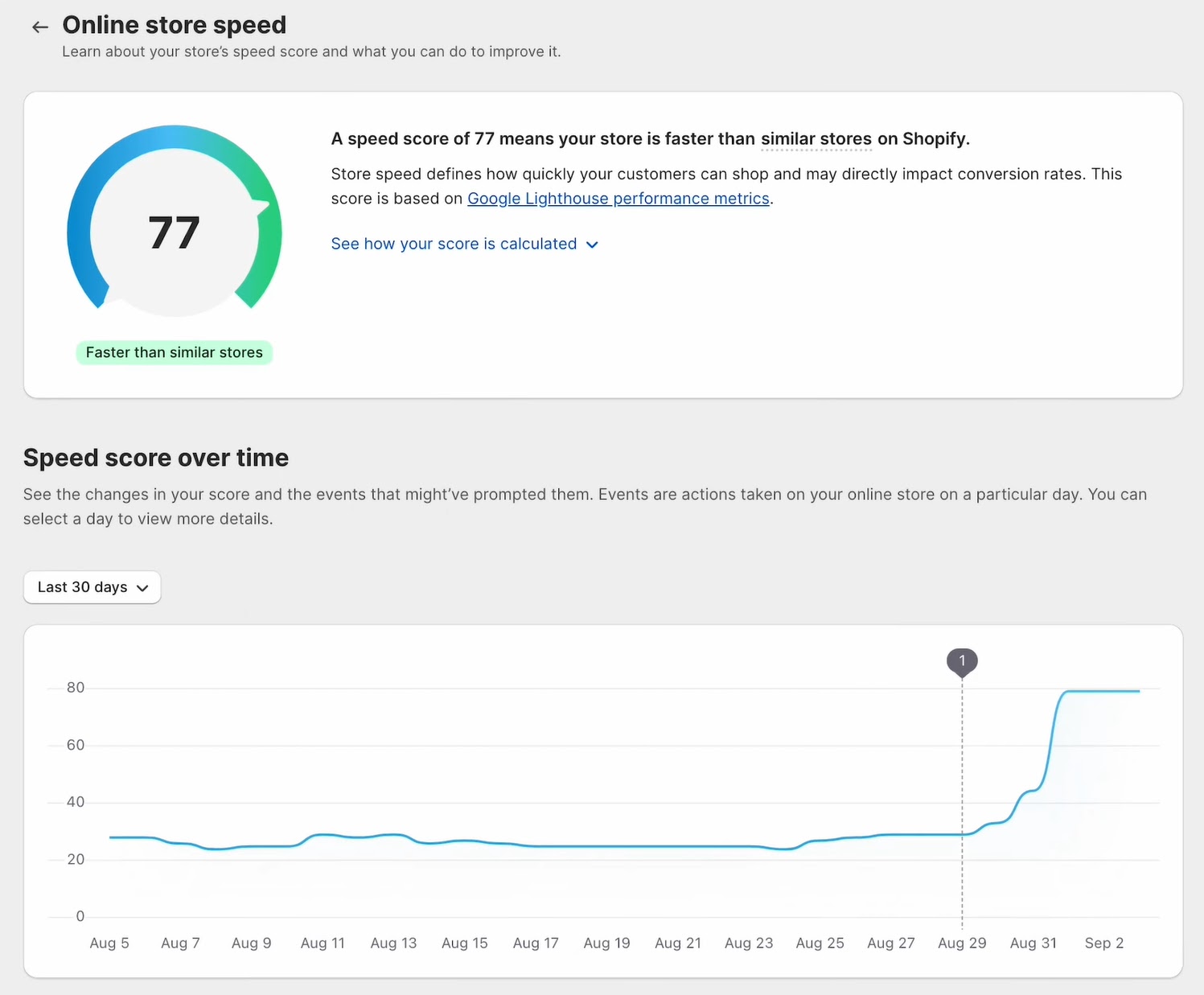
The report exhibits you a rating out of 100, benchmarks it towards different outlets in the identical trade, and offers you suggestions on enhance your Shopify web site’s pace.
You can even see a abstract of how your rating has modified over time. And which occasions might need impacted your web site pace rating.
To see your Shopify web site pace overview, head over to your Shopify Admin. Then, click on on “Analytics” after which “Experiences.”
As soon as there, seek for “on-line retailer pace” and click on “On-line retailer pace.”
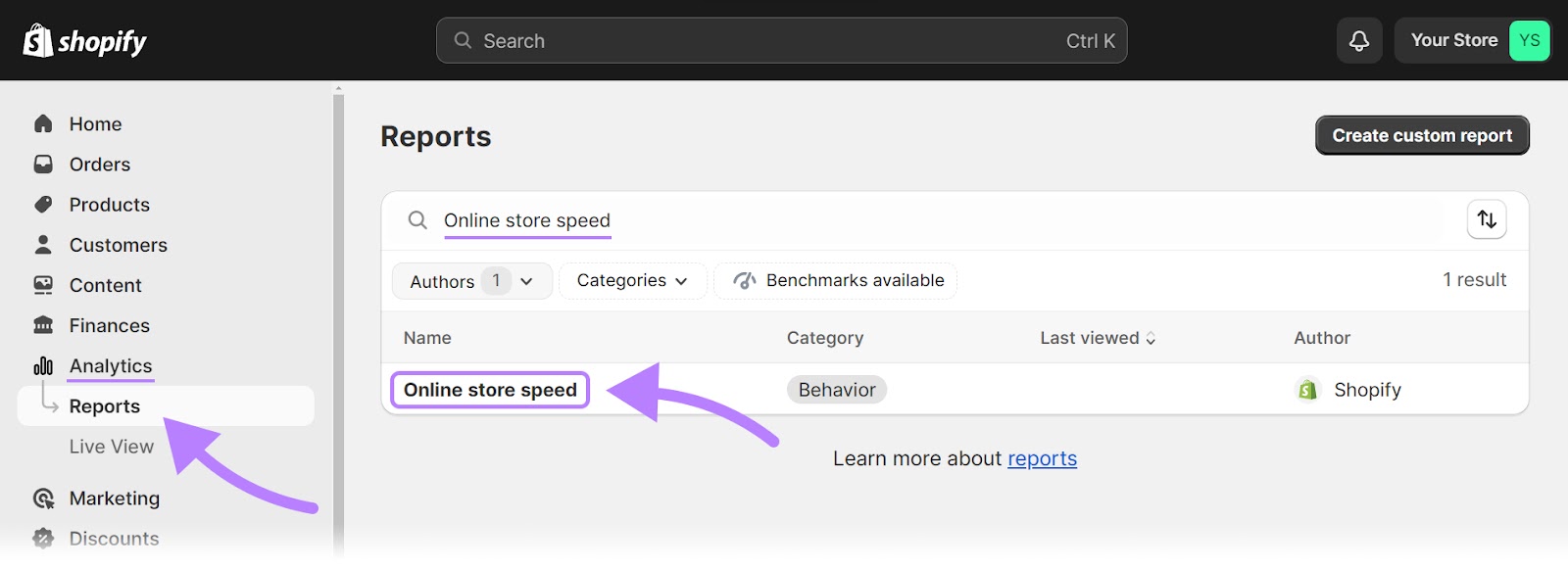
Google PageSpeed Insights
Google PageSpeed Insights (PSI) is a free software that measures a single URL’s efficiency on each cellular and desktop.
You should utilize PSI for an evaluation of your Core Net Vitals. And different vital metrics
Right here’s what the ensuing report appears to be like like:
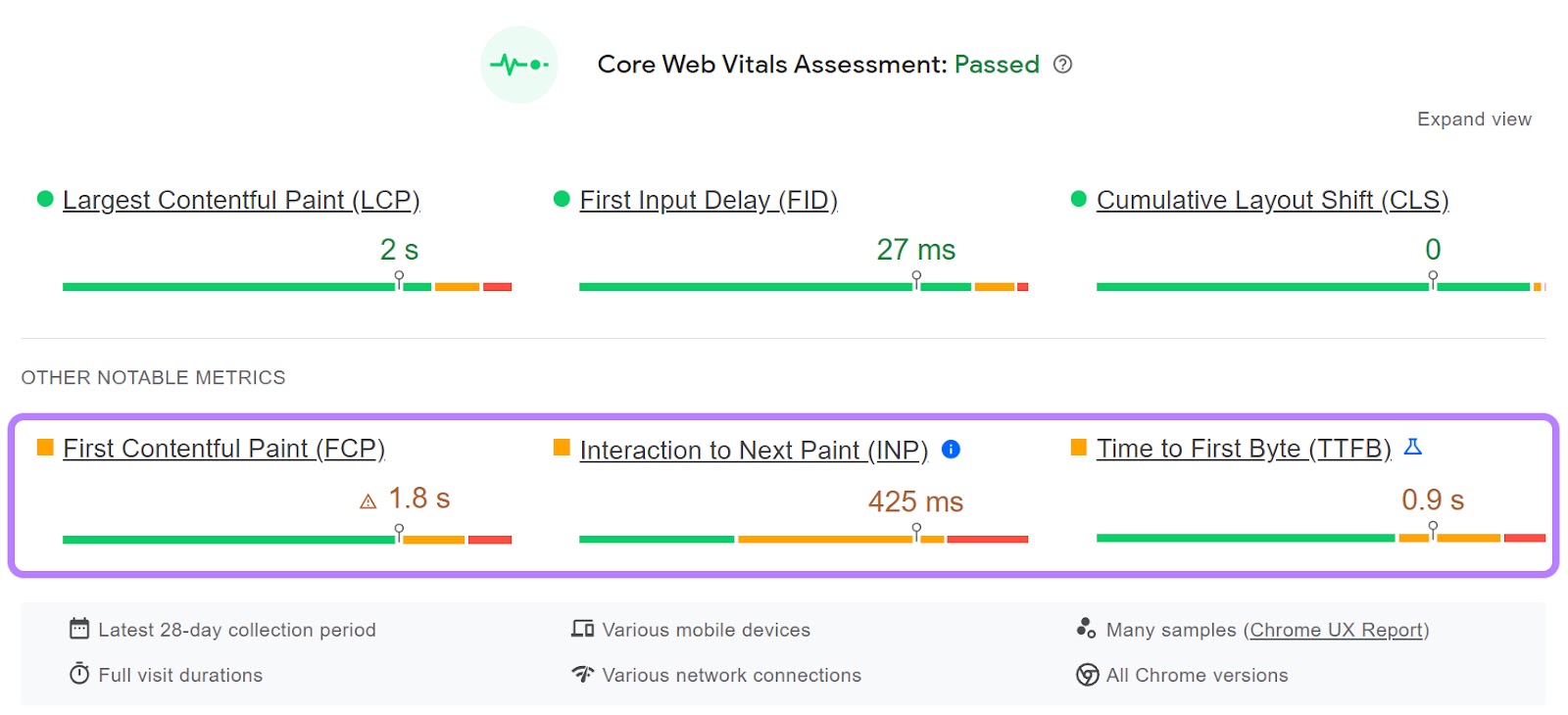
You’ll additionally obtain efficiency scores in numerous areas and high-level suggestions for every:
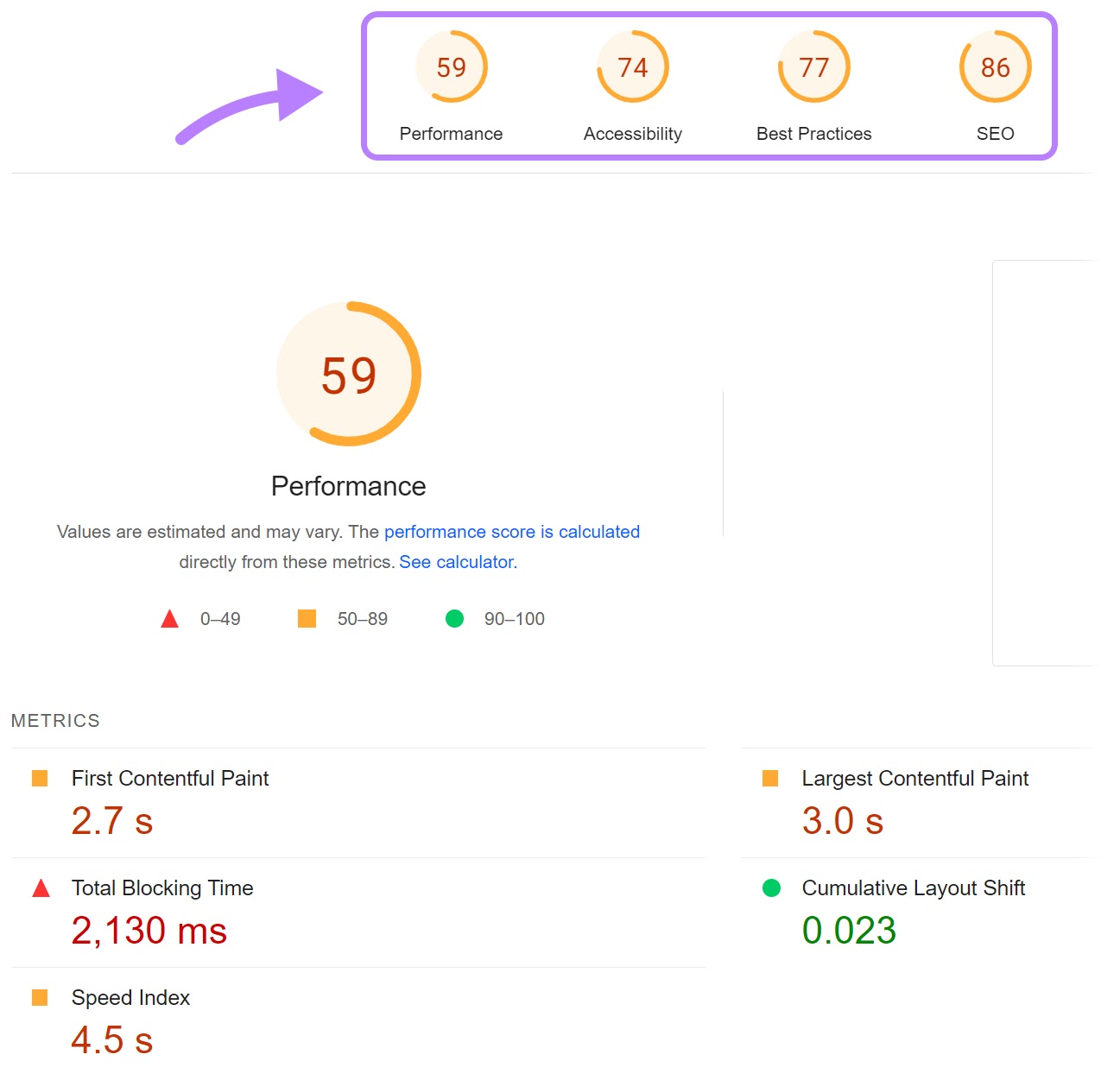
To make use of this software, go to the PSI page, enter a URL out of your Shopify web site that you just wish to consider, and click on “Analyze.”
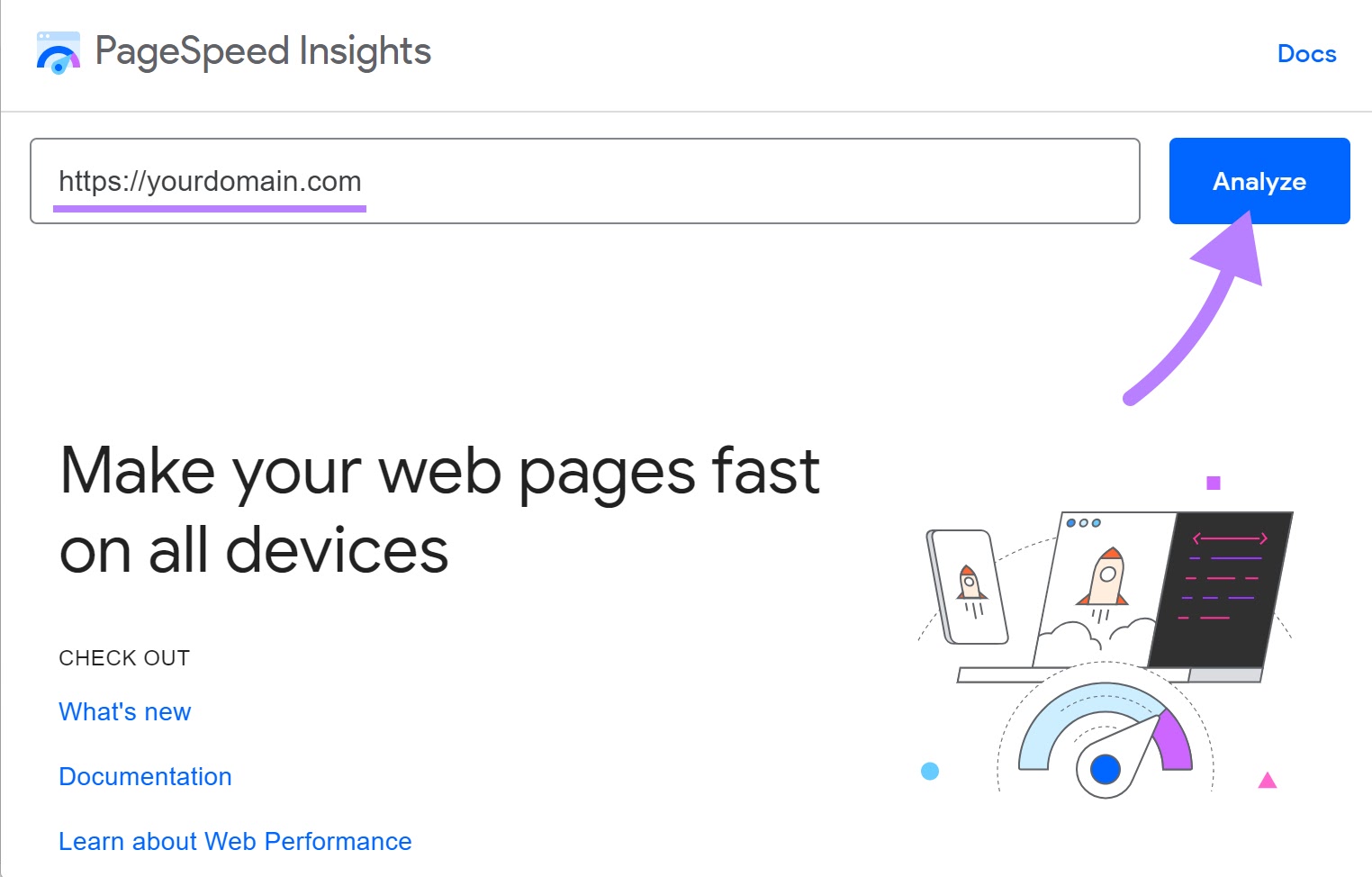
Take Your Shopify Web site Efficiency to the Subsequent Stage
The pace of your Shopify web site could make or break your guests’ procuring experiences. And affect your capability to rank.
Fortunately, there are various beginner-friendly steps you’ll be able to take to optimize your Shopify web site pace earlier than it turns into a problem.
Use Semrush’s Site Audit software to frequently keep watch over your Shopify web site’s well being. So you’ll be able to guarantee an pleasant procuring expertise that retains prospects coming again.




